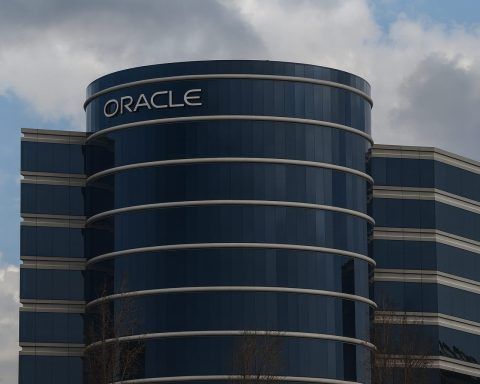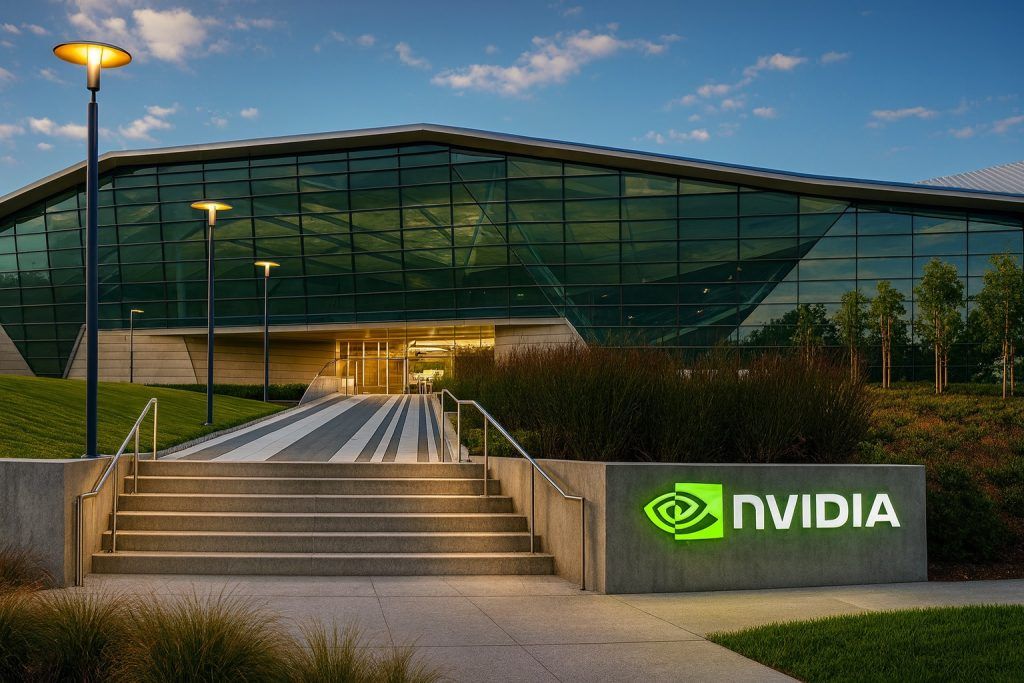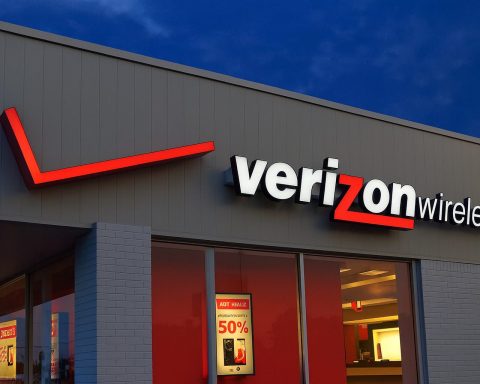- NYSE Owner’s $2B Crypto Gamble: Intercontinental Exchange (ICE), the parent of the New York Stock Exchange, is investing up to $2 billion in Polymarket – a crypto-based prediction markets platform – in a deal valuing the startup at around $8–10 billion [1]. This marks the first major Wall Street stake in a prediction market. ICE’s stock initially jumped about 4% on the news, reflecting investor optimism [2] (though shares later leveled off).
- What is Polymarket? Founded in 2020, Polymarket is the world’s largest decentralized prediction market platform [3]. Users bet on real-world events – from elections and sports to economics and even pop culture – by buying shares on yes/no outcomes using cryptocurrency (usually stablecoins) [4] [5]. For example, traders have wagered on “When will the U.S. government shutdown end?” and even the least-streamed Taylor Swift song on a new album [6]. Prices fluctuate with crowd sentiment, effectively turning opinions into tradable odds.
- Back From Ban to “Green Light”: Polymarket was fined $1.4 million in early 2022 for offering unregistered event-based bets and barred U.S. users [7]. After three years operating overseas, it staged a comeback: in mid-2025 Polymarket bought a CFTC-licensed exchange (QCEX) for $112 M to fast-track U.S. approval [8]. In Sept 2025, regulators granted a no-action letter clearing Polymarket to legally re-enter the U.S. market [9]. CEO Shayne Coplan hailed it as a “green light to go live in the USA,” achieved in record time [10]. The U.S. site is set to launch with markets on everything from NFL games to elections, pending final regulatory formalities.
- Big-Name Backers Pile In: Polymarket’s rapid rise has attracted high-profile supporters. Billionaire Peter Thiel’s Founders Fund led a mid-2025 funding round that valued Polymarket above $1 billion [11]. Weeks later, Donald Trump Jr. invested and joined as an adviser [12], just before regulators approved Polymarket’s U.S. launch. ICE’s massive stake now adds blue-chip credibility and resources [13]. “Our partnership with ICE marks a major step in bringing prediction markets into the financial mainstream,” said CEO Coplan [14].
- Prediction Markets Boom: Once a niche, prediction markets are surging in popularity and scale. Analysts project the sector’s volume will explode from about $1.5 billion in 2024 to $95 billion by 2035 [15]. Wall Street and fintech firms are cautiously embracing the trend: Robinhood began offering event contracts via a partner exchange, and CME Group is reportedly teaming with FanDuel on sports event markets [16]. Some see this as a disruptive threat – an activist short-seller warns Wall Street may be “downplaying the tectonic shift” these platforms pose to traditional sportsbooks like DraftKings [17]. Gaming industry figures call the rise of prediction exchanges both a “competitive challenge and a regulatory dilemma” for regulators and casinos [18].
ICE’s $2B Vote of Confidence in Polymarket
Wall Street’s biggest exchange operator is making a bold bet that betting on real-world events is the next big financial frontier. Intercontinental Exchange Inc. (ICE) – the owner of the NYSE – confirmed it will invest $2 billion in Polymarket, a deal that values the crypto-powered betting platform at roughly $8 billion pre-money (around $10B post-investment) [19] [20]. This is a landmark endorsement of prediction markets by a mainstream financial giant. The deal, first reported by The Wall Street Journal and Bloomberg, could be officially announced any day [21].
Why it matters: ICE’s backing signals that event-driven trading is moving from the fringes of crypto into the financial mainstream. “This would be a vote of confidence for the world’s largest prediction market, as it prepares to re-enter the U.S.” [22] after years in regulatory limbo. It’s also ICE’s largest foray into crypto territory to date, bigger than past ventures like its Bakkt digital asset platform [23]. If finalized, the $2B stake would give ICE significant ownership in Polymarket and a foothold in the burgeoning market for betting on event outcomes.
Market reaction: News of the talks lifted ICE’s own stock. Investors appeared to cheer the move as forward-thinking – ICE shares spiked about 4.4% in early trading after the story broke [24]. (By afternoon, the stock’s gain pared back to a modest uptick [25], but the initial enthusiasm underscored excitement around the deal.) Analysts noted that ICE is typically a conservative, highly regulated company, so such a bet on a crypto-centric startup indicates strong conviction [26]. “Intercontinental Exchange is widely viewed as conservative in its investments,” the Financial Times observed in context – recent legal victories and a more favorable regulatory stance under the Trump administration likely boosted ICE’s confidence in this sector [27].
ICE isn’t just providing cash. Under the agreement, ICE will become global distributor of Polymarket’s data, packaging its live odds and trading trends into market “sentiment indicators” for clients [28]. In other words, the exchange will monetize the crowd wisdom generated on Polymarket’s platform – treating prediction odds as valuable data alongside stock indexes, rates, and other financial metrics. “The real prize for ICE is not just clearing contracts but monetizing the data, selling odds as sentiment factors alongside rates and credit where every rumor pays a fee,” explains Michael Ashley Schulman, CIO at Running Point Capital Advisors [29]. ICE and Polymarket also plan to collaborate on tokenization initiatives, exploring how to blend traditional financial assets with blockchain-based trading [30].
For ICE CEO Jeffrey Sprecher, the appeal is the fusion of old and new. “Our investment blends ICE… founded in 1792, with a forward-thinking, revolutionary company pioneering change in DeFi,” Sprecher said, calling Polymarket a user-driven innovator that could tap opportunities across markets alongside ICE [31]. In short, the exchange group sees Polymarket as a bridge between legacy finance and next-gen crypto markets – one that might eventually yield new tradable products on ICE’s own exchanges.
What Exactly Is Polymarket? Inside the Prediction Platform
Polymarket is often described as a “bet on anything” marketplace – think of it as a stock market for event outcomes. On this platform (built on blockchain technology), users trade binary options on whether a given event will happen or not. Each market poses a question with yes/no (or multiple-choice) outcomes, and users buy shares in outcomes they believe will come true. If they’re right, they profit; if wrong, they lose their stake. Crucially, prices are determined by supply and demand among the users – essentially turning collective opinion into a real-time probability forecast.
Range of wagers: Polymarket’s markets span an eclectic array of topics. Politics and elections are big draws (e.g. betting on who will win an election, or whether a piece of legislation will pass by a deadline). Sports are popular (game outcomes, point totals, player stats), as is entertainment (award show winners, celebrity news) and economy/finance (Federal Reserve rate moves, economic indicator results) [32]. If an event is newsworthy and has a clear, verifiable outcome, it can probably become a Polymarket contract. For instance, during the recent U.S. government funding standoff, Polymarket let traders bet on when a government shutdown would end [33]. The platform even hosted a market on Taylor Swift’s album performance – specifically, which new song would end up the least streamed track [34] – showing that no topic is too trivial if there’s interest and data to resolve it. This breadth of markets gives Polymarket a pulse on public sentiment across domains.
How it works: Unlike a traditional bookmaker or casino, Polymarket doesn’t take the opposite side of users’ bets or set odds itself. It’s a peer-to-peer exchange; users trade outcome shares with each other, and prices continuously adjust to balance buyers vs. sellers. If a contract is trading at, say, $0.60, that implies the crowd estimates a 60% probability of that outcome occurring. At resolution, winning outcome shares pay $1 (losing shares expire worthless). Settlement is handled via smart contracts and trusted oracles that report the real-world outcome (so results can’t be rigged by the platform) [35]. Polymarket historically used stablecoins (like USDC) for wagers, with everything recorded on the Ethereum blockchain (notably using the Polygon network, hence “Poly”market) [36]. The decentralized design means transparency – all trades and odds are public – and global accessibility (anyone with internet and crypto can participate, except where restricted by law).
Scale: Though only a few years old, Polymarket has seen significant traction. By mid-2025 it had facilitated hundreds of millions of dollars in bets, nearly 3× the volume of its nearest U.S. competitor, Kalshi [37]. At one point, Polymarket handled over 24,000 distinct markets in a single month, an analysis found, showcasing the scalability of its DeFi infrastructure [38]. Some markets during peak news events attract substantial liquidity, allowing traders to place large wagers or quickly buy/sell positions much like they would with stocks.
Wisdom of crowds: Enthusiasts point out that prediction markets often yield uncannily accurate forecasts. By aggregating the knowledge (and money) of thousands of participants, platforms like Polymarket can sometimes predict election outcomes or economic results better than polls or pundits. This is one reason institutional investors and analysts have started to watch these markets – the odds on Polymarket provide a real-time probability of events that can inform financial decisions [39]. For example, hedge funds might monitor an event market on an interest rate hike to gauge the likelihood of a Fed move, or political analysts might follow election markets for early signals on candidates’ chances.
Caveats: Of course, prediction markets are not foolproof. They can be swayed by misinformation, low-liquidity volatility, or irrational hype. Polymarket has seen its share of quirky outcomes – such as an over-hyped bet on Elon Musk launching true driverless “robotaxis” by a deadline, which ended with optimistic bettors losing everything when the tech didn’t pan out [40]. Such episodes highlight that while these markets tap crowd wisdom, they also carry the risk of speculation and require caveat emptor – traders can be as wrong as any expert, and real money is on the line.
From Crackdown to Comeback: Polymarket’s Regulatory Journey
Not long ago, Polymarket was persona non grata to U.S. regulators. In late 2021, the Commodity Futures Trading Commission (CFTC) began probing the platform for offering event-based binary options (essentially the yes/no bets) without regulatory approval. This culminated in January 2022 with Polymarket settling charges by paying $1.4 million and agreeing to geofence U.S. users [41]. The young startup had to block Americans from trading and shut down numerous markets that might be considered “swaps” or unregistered event contracts. Given that the U.S. was Polymarket’s most active user base (especially for political betting), this was a major setback – effectively exiling the platform from its home market.
For the next three years, Polymarket operated overseas, serving users in Europe, Asia, and elsewhere while the U.S. doors stayed closed. However, founder Shayne Coplan quietly plotted a return. The regulatory climate was slowly shifting: a rival startup, Kalshi, spent years obtaining a full CFTC license as a designated contract market, proving that a regulated path for event markets was possible. By 2025, Polymarket took bold steps to get legal footing in America:
- Regulatory Shortcut via Acquisition: In July 2025, Polymarket acquired a small CFTC-registered exchange known as QCEX (or QCX) for $112 million [42]. Buying an existing licensed entity gave Polymarket a fast-track to regulatory compliance, rather than applying from scratch (a process that can take years). QCEX’s licenses for trading event contracts and clearing trades became Polymarket’s ticket back into the U.S. market under the proper oversight.
- No-Action Relief: Polymarket then worked with the CFTC to ensure its new U.S. platform would comply with rules. In early September 2025, the CFTC’s Division of Market Oversight issued Polymarket a no-action letter – basically a written assurance that the agency would not take enforcement action over certain event markets Polymarket planned to offer [43]. This green-lit Polymarket to launch a U.S. site with a slate of approved contracts (initially covering sports games, point spreads, and election outcomes) without fear of running afoul of regulators [44] [45]. In an unusually frank admission, CFTC officials around that time acknowledged that the agency had gotten “bogged down in a sinkhole of legal uncertainty” fighting prediction markets and needed a more permissive approach [46]. The no-action relief, granted in record time, reflected a significant policy shift – one CFTC commissioner even said it was time to end the war with the industry and embrace regulated innovation [47].
- Relaunch Plans: Armed with regulatory clearance, Polymarket announced it had effectively been “greenlit” to relaunch in the USA [48]. Coplan publicly thanked CFTC staff for their impressively swift work, noting the approval came much faster than anyone expected [49]. By early October 2025 – almost exactly three years after the shutdown – Polymarket was preparing to flip the switch on its U.S. platform [50]. Thousands of eager American users joined a waitlist to re-register [51]. The timing wasn’t without hiccups; a U.S. government shutdown in October delayed some CFTC processes and thus the official launch by a few days [52] [53]. But Polymarket’s team signaled it was ready to go live imminently, with initial markets focusing on broadly acceptable categories (sports, general events, perhaps entertainment) while steering clear of ultra-sensitive domains like purely political elections until rules become clearer [54] [55].
State vs. federal tug-of-war: One looming question is how state gambling laws will treat these federally sanctioned event markets. The CFTC may view Polymarket’s contracts as regulated commodities or swaps – which could preempt state gambling restrictions – but not all states agree. In fact, regulators in New Jersey and Nevada (states with large gambling industries) have tried to block Kalshi’s sports contracts, arguing they violate state betting laws despite CFTC approval [56]. Kalshi had to fight those injunctions in court, and judges in both NJ and NV initially ruled in Kalshi’s favor, allowing it to operate pending further litigation [57]. This sets an interesting precedent: if federal law deems something a commodity trade, can states still call it illegal gambling? It remains a gray area. “If courts ultimately side with [the exchanges], it could open the door for widespread use of sports-based event contracts outside of traditional sportsbook regulation… It’s both a competitive challenge and a regulatory dilemma,” explains gaming attorney Johnny P. ElHachem [58]. In other words, Polymarket’s U.S. return is testing uncharted waters. It may be legally blessed at the federal level, but state acceptance will likely evolve case-by-case. Polymarket is proceeding optimistically – touting itself as the “world’s largest prediction market” now coming to the U.S. legally [59] – even as it navigates this patchwork of state attitudes.
Notably, the political winds have blown in Polymarket’s favor. President Donald Trump’s administration (Trump returned to office in 2025) has installed regulators seen as friendlier to these markets [60]. For instance, Trump nominated Brian Quintenz – a former CFTC commissioner who had openly supported event markets and even sat on Kalshi’s board – back into a key role [61]. Such appointments signaled a top-down tolerance for experimentation in financial betting. This favorable federal stance, combined with Polymarket’s clever compliance maneuvers, created a perfect opening for the platform’s U.S. comeback.
Prediction Markets Boom: Wall Street, Gamblers & Regulators Take Note
Polymarket’s rise is part of a broader explosion in prediction markets that is blurring the line between finance and gambling. What was once a fringe internet experiment (remember the now-defunct InTrade, or the Iowa Electronic Markets run by academics) has, thanks to blockchain and a speculative trading boom, morphed into a hot new sector attracting serious money:
- Wall Street’s Interest: ICE’s multi-billion bet is the clearest sign that finance heavyweights see potential here, but it’s not the only one. In August 2025, popular brokerage app Robinhood teamed up with Kalshi to let users trade on NFL and college football outcomes via Kalshi’s regulated markets [62]. Meanwhile, Chicago’s CME Group (the giant futures exchange) reportedly has a partnership with FanDuel in the works, aiming to list sports event futures under the FanDuel brand [63]. These moves show that traditional exchanges, fintech apps, and even sportsbooks themselves are testing the waters – they’d rather participate in event trading than be disrupted by it.
- Venture Capital & Notables: Beyond Peter Thiel and Donald Trump Jr. backing Polymarket, other big names have lent credibility to the space. Polymarket’s mid-2025 funding round and rapid valuation jump (from ~$1B to ~$10B within months) signaled a “feeding frenzy” among venture investors for a leader in this category [64]. Bloomberg noted that Polymarket’s ascent “underscores the rising popularity and credibility” of betting sites on everything from politics to pop culture [65]. The presence of prominent figures and big money is evolving prediction markets from a niche hobbyist realm into what looks increasingly like a legitimate asset class.
- Disrupting the Gambling Industry: It’s not just financiers who are paying attention – casinos and sportsbooks have reason to both envy and fear prediction markets. Platforms like Polymarket and Kalshi offer a very different model from traditional sports betting. They charge only small trading fees and don’t mind who wins, whereas sportsbooks take a larger cut (the “vig”) and effectively profit off bettors’ losses. Importantly, a CFTC-regulated exchange can potentially accept users from anywhere in the U.S. (18+ years old) because it’s regulated as a commodities market, even in states that ban conventional sports gambling [66]. That undercuts one of the big advantages held by DraftKings, FanDuel, and others – those companies must abide by a state-by-state licensing patchwork and often can’t operate nationally. A nationwide prediction exchange with low fees is a direct competitive threat to the sportsbook business model. In fact, when Kalshi launched its NFL prediction markets this fall, shares of DraftKings and Flutter (FanDuel’s parent) tumbled – together losing about $7 billion in market value in a short span [67]. Shortly after, Spruce Point Capital (an activist short seller) revealed it was shorting DraftKings, arguing that prediction markets represent a “tectonic shift” that analysts are underestimating [68] [69]. Spruce Point’s report emphasized that every dollar wagered on a prediction exchange is potentially a dollar not spent on a traditional sportsbook [70]. If even a slice of sports bettors migrate to exchanges for better odds or broader betting options, the big bookmakers will feel the pinch. Unsurprisingly, those incumbents are scrambling – FanDuel’s collaboration with CME is one example of trying to get ahead of the curve. Some analysts think prediction markets might even grow the overall pie (attracting new bettors who prefer an exchange format) [71]. But there’s no doubt the lines between Wall Street-style trading and gambling are getting blurred. We’re seeing Las Vegas and Wall Street collide in real time, forcing old-school gambling firms to adapt or lobby harder against these upstarts.
- Regulators Caught in the Middle: The rapid emergence of event markets has put regulators in a tricky spot. On one hand, the CFTC has now blessed exchanges like Polymarket and Kalshi, viewing them as innovative financial markets. On the other hand, sports leagues (NFL, NCAA, etc.) and state gambling regulators have voiced concerns about game integrity and oversight [72]. Prediction exchanges aren’t subject to many of the rules that casinos and sportsbooks must follow – no mandated fraud monitoring by gaming boards, no state taxes paid into gambling funds – because they’re under federal commodities law rather than gambling law [73]. This jurisdictional mismatch is causing a tug-of-war. We will likely see court battles (as in NJ and Nevada) and possibly new federal guidelines to address questions like: Should purely political events (e.g. elections) be allowed for trading? The CFTC has long banned election betting for fear of manipulation or ethical issues, but with Polymarket’s high-profile presence, that debate may be rekindled [74]. For now, Polymarket appears to be avoiding the most controversial markets (like betting directly on presidential election outcomes) until there’s more regulatory clarity [75]. The platform is focusing on areas with a clearer green light (sports, entertainment, general events) as it builds its U.S. track record.
Outlook: Will Polymarket Make Prediction Markets Mainstream?
ICE’s blockbuster investment suggests that prediction markets have “arrived” as a credible new segment of finance. A decade ago, the idea of openly betting on elections or economic data was mostly confined to academic projects and offshore betting sites. Today, thanks to cryptocurrency tech and a global appetite for trading, prediction markets are handling billions in volume and drawing the attention of major exchanges and institutional investors [76].
Most experts believe we’re only in the early innings. Market research (cited by Techopedia) projects the prediction market sector to swell from about $1.5 billion in 2024 to $95 billion by 2035. If that proves true, the industry is poised for exponential growth as participation spreads from crypto-savvy bettors to everyday traders, companies, and even governments seeking crowd-based forecasts. We might see companies hedging risks by betting on event outcomes (imagine a movie studio hedging box office revenue with a market on a film’s opening weekend, or a farmer hedging crop prices via weather outcome markets). Some policymakers have even begun to explore using prediction markets as policy tools – leveraging the crowd’s probability estimates to inform decisions (a concept trialed quietly in the past by agencies interested in forecasting geopolitical events).
Polymarket’s position: With its blend of decentralization and regulatory compliance, Polymarket is viewed as uniquely positioned to ride this wave [77]. Many competitors exist on a spectrum – some are fully decentralized (and thus banned in the U.S.), while others like Kalshi are fully regulated but perhaps slower-moving and limited in scope. Polymarket is attempting a “best of both” approach: harness the global liquidity and innovation of crypto, while also securing U.S. regulatory blessings. “Polymarket’s competitive edge lies in its ability to balance decentralization with regulatory compliance, a feat few platforms have achieved,” one analysis noted [78]. This balance could make it a prime contender to bring prediction markets into the mainstream financial fold.
That said, challenges remain. Maintaining deep liquidity and user interest across the long tail of thousands of markets is tough – typically, a few big events (e.g. a presidential election or the Super Bowl) attract the lion’s share of betting volume, while many smaller markets see little action. Polymarket will need to ensure engagement doesn’t fizzle in off-peak times, and that markets are curated to avoid ambiguity or manipulation. Content moderation is another ongoing task: the platform has to enforce rules so that markets are well-defined and not facilitating harmful activity (no markets that incentivize committing a crime for profit, for instance). Additionally, as the space heats up, competition is set to intensify. Besides Kalshi in the U.S., traditional gambling companies might pivot into exchange-style betting, and new crypto projects could launch their own tokens and prediction dApps to challenge Polymarket’s crown. Polymarket will need to continuously innovate its product and perhaps lean on ICE’s resources to stay ahead.
On the optimistic side, ICE’s involvement gives Polymarket an unprecedented level of legitimacy and potential integration with traditional markets. ICE CEO Jeff Sprecher is known for expanding into new frontiers (he transformed electronic energy trading before acquiring the NYSE, and he ventured into crypto with Bakkt). His interest in Polymarket suggests he envisions event contracts as a new asset class that one day could be traded alongside stocks, bonds, and commodities [79]. “We may soon see a world where ‘prediction futures’ on elections or the Oscars are offered on regulated exchanges, or where the probabilities from Polymarket’s markets are used in financial models just like volatility indices or economic forecasts,” mused one analyst [80]. In practical terms, ICE could help list certain popular Polymarket markets on its exchanges (pending regulatory allowances) or package Polymarket’s data into products for hedge funds. The lines between betting on events and investing could further blur if this vision plays out – a development that will fascinate some and concern others.
In the near term, the $2 billion cash infusion will hand Polymarket a massive war chest to expand and market itself. We can expect an aggressive push to acquire users (perhaps luring folks from DraftKings or crypto trading platforms), develop new features, and lobby for supportive regulations. Coplan has framed his startup’s mission as bridging “DeFi and institutional finance,” and that bridge now has a major institution literally invested in its success [81]. The partnership also underscores a broader trend: established financial players are increasingly looking to crypto innovations for growth. Just as big banks eventually embraced blockchain for settlements, big exchanges are now embracing prediction markets for data and trading opportunities.
Forecast: If Polymarket’s U.S. rollout succeeds and ICE’s bet pays off, it could accelerate the march of prediction markets into everyday investing. Imagine checking the stock ticker and also the odds of various world events each morning – both might soon influence portfolio strategies. However, a lot will depend on execution and oversight. Regulators will be watching closely. Any high-profile misstep (like a controversial market or a manipulation scandal) could invite a crackdown or public backlash. Conversely, a well-run prediction exchange integrated with Wall Street could demonstrate the benefits of “crowd wisdom” markets, potentially leading to even wider adoption.
For now, Polymarket and ICE are at the start of this grand experiment. Wall Street is literally betting on betting, testing whether a crypto-born idea can reshape finance. “Stay tuned,” CEO Coplan told followers after securing U.S. approval [82] – an apt choice of words. With billions on the line and the fate of a nascent industry in play, the world indeed will be staying tuned to see if this bold wager turns into a winning trade, and if prediction markets will ultimately redefine how we invest, speculate, and gauge the odds in an uncertain world.
Sources: The Wall Street Journal; Reuters [83] [84]; New York Times DealBook; Tech Space 2.0 (TS2) [85] [86]; Forbes [87] [88]; ICE Press Release [89] [90]; ESPN [91]; CoinDesk; AInvest/Techopedia [92]; Spruce Point Capital report via InGaming [93]; and others.
References
1. ts2.tech, 2. ts2.tech, 3. ts2.tech, 4. ts2.tech, 5. www.reuters.com, 6. www.reuters.com, 7. ts2.tech, 8. ts2.tech, 9. ts2.tech, 10. ts2.tech, 11. ts2.tech, 12. ts2.tech, 13. ts2.tech, 14. www.mexc.com, 15. ts2.tech, 16. ts2.tech, 17. ts2.tech, 18. ts2.tech, 19. www.reuters.com, 20. www.reuters.com, 21. ts2.tech, 22. www.reuters.com, 23. ts2.tech, 24. ts2.tech, 25. www.reuters.com, 26. www.mexc.com, 27. www.mexc.com, 28. ir.theice.com, 29. www.reuters.com, 30. ir.theice.com, 31. ir.theice.com, 32. ts2.tech, 33. ts2.tech, 34. www.reuters.com, 35. ts2.tech, 36. ts2.tech, 37. ts2.tech, 38. ts2.tech, 39. ts2.tech, 40. ts2.tech, 41. ts2.tech, 42. ts2.tech, 43. ts2.tech, 44. ts2.tech, 45. ts2.tech, 46. ts2.tech, 47. ts2.tech, 48. ts2.tech, 49. ts2.tech, 50. ts2.tech, 51. ts2.tech, 52. www.mexc.com, 53. www.mexc.com, 54. ts2.tech, 55. ts2.tech, 56. ts2.tech, 57. ts2.tech, 58. ts2.tech, 59. ts2.tech, 60. ts2.tech, 61. ts2.tech, 62. ts2.tech, 63. ts2.tech, 64. ts2.tech, 65. ts2.tech, 66. ts2.tech, 67. ts2.tech, 68. ts2.tech, 69. ts2.tech, 70. ts2.tech, 71. ts2.tech, 72. ts2.tech, 73. ts2.tech, 74. ts2.tech, 75. ts2.tech, 76. ts2.tech, 77. ts2.tech, 78. ts2.tech, 79. ts2.tech, 80. ts2.tech, 81. ts2.tech, 82. ts2.tech, 83. www.reuters.com, 84. www.reuters.com, 85. ts2.tech, 86. ts2.tech, 87. www.mexc.com, 88. www.mexc.com, 89. ir.theice.com, 90. ir.theice.com, 91. ts2.tech, 92. ts2.tech, 93. ts2.tech










